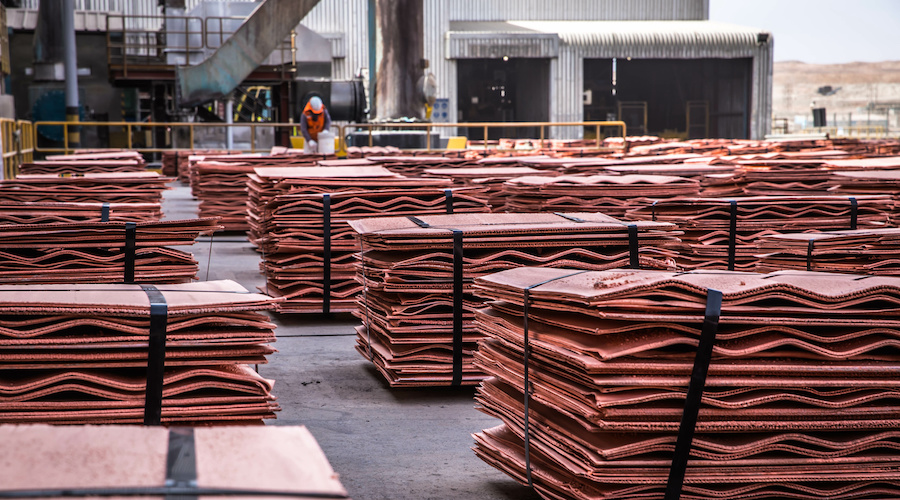Mining
Tuesday, January 9th, 2024 6:07 pm EDT
Key Points
- Surge Battery Metals’ High-Grade Lithium Discovery Updates: Surge Battery Metals Inc. has reported updates from the remaining certified assays of the 2023 core drilling phase at its Nevada North (NNLP) high-grade lithium clay discovery. The latest results indicate high-grade lithium mineralization extending 600 meters west of the 2022 hole NN2203. Additionally, mineralization has been expanded to depth in hole NN2311, and a narrow band of mineralization was intersected from the surface in the northernmost hole, NN2312.
- Extension of Mineralized Horizons: Two holes, NN2307 and NN2310, drilled from the same pad reveal that mineralized horizons extend at least 600 meters west of the 2022 hole NN2203. NN2307, drilled vertically, cut a total of 50.3 meters averaging 2,533 parts per million (ppm) lithium, while NN2310, drilled at a 50-degree dip due east, cut 47.7 meters averaging 3,220 ppm lithium. Hole NN2311, drilled from the same pad as sonic core hole NN2302, confirmed grades observed in sonic drilling and added seven meters of mineralized clay to the sequence thickness at the location.
- Achievements and Future Plans: The diamond core drilling achieved several significant goals, including confirming the extension of the known deposit, consistency in mineralization and lithium grades, lateral continuity of mineralized layers, identification of deeper mineralized zones, and understanding potential structural complexities and basin geomorphology. Surge Battery Metals Inc. is now reviewing its geological model and plans to publish its maiden Mineral Resource Estimate later in Q1. The results contribute to the understanding of the lithium project’s geology and will guide future exploration and mine plans.
The remaining certified assays from the 2023 core drilling phase on Surge Battery Metals Inc.’s high-grade lithium (Li) clay discovery at Nevada North (NNLP) have intersected high-grade lithium mineralization 600 metres (about 2,000 feet) west of 2022 hole NN2203. Additionally, mineralization has been extended to depth in hole NN2311 and a narrow band of mineralization was intersected starting from surface in the northernmost hole, NN2312.
Two holes (NN2307 and NN2310) drilled from the same pad show the mineralized horizons extend at least 600 metres (about 2,000 ft) west of hole NN2203 drilled in 2022. Hole NN2307 was drilled vertically, and NN2310 was drilled at a 50-degree dip due east. Hole NN2307 cut a total of 50.3 metres averaging 2,533 parts per million Li and NN2310 cut 47.7 metres averaging 3,220 ppm Li.
Hole NN2311 was drilled from the same pad as sonic core hole NN2302 to compare sonic and diamond core results and to extend the hole in search of deeper clay horizons. The hole adds seven metres (23 feet) of mineralized clay to the sequence thickness at this location, and core assays align well with sonic assays. NN2311 cut a total of 39.5 metres at an average grade of 3,550 ppm Li in the upper zone and seven metres of 2,732 ppm Li in the newly identified deeper zone.
Hole NN2312 was drilled north of hole NN2303 to test for further extension of mineralized clays. The hole intersected 3.6 meters at surface of mineralized clay averaging 1,480 Li ppm. Evidence from core and geophysics have led to the interpretation of a new fault that suggests the main part of the basin to the south is a down-dropped block. Interestingly, low-resistivity horizons observed in the geophysics data plunge below the surface to the north of hole NN2312, suggesting there may be additional lithium mineralization to the north of this hole.
Greg Reimer, Chief Executive Officer, and Director commented, “Today’s results mark the end of a successful 2023 exploration program at the NNLP. Our geophysics and drilling programs have greatly expanded the 2022 mineralized footprint and have continually produced near-surface composite grades of >3,000ppm Li. The deeper drilling has validated our interpretations and has generated additional near-surface targets to the east. We are now in the process of reviewing our geological model before handing it over to the resource estimators. We look forward to publishing our maiden Mineral Resource Estimate later in Q1.”
NN2307
Drilled to a total depth of 235.31m (772 ft), hole NN2307 tested for the extension of mineralization to the west of the 2022 drilling. Westward, towards the suspected basin center, the upper mineralized horizon was expected to reside deeper below surface. This diamond core step-out hole confirmed the lateral continuity of the high-grade mineralized horizons. NN2307 returned positive sample results ranging between 1060 ppm Li to 4,390 ppm Li. These results include four contiguous mineralized horizons averaging 1410ppm Li over 7.6m, 3268 ppm Li over 21.3m, 1230ppm Li over 3.1m, and 2361ppm Li over 18.3m. The upper 7.6m-thick horizon was an unexpected intercept and appears to correlate to the upper horizon at the top of NN2303, 1500m to the north.

NN2310
Drilled to a total depth of 303.89m (997 ft), hole NN2310 was collared at the same pad as NN2307 but angled at 50 degrees to the east. This diamond core hole was designed as a 100m (about 330 ft) step-out to the east of NN2307 and to better define the geometry of the shallow dipping mineralized horizons. NN2310 returned positive sample results up to 5,660 ppm Li. These results include three contiguous mineralized horizons averaging 1479 ppm Li over 7.6m, 4084ppm Li over 30.9m, and 1749ppm Li over 9.1m. The thick and high-grade middle horizon averaging >4000ppm Li correlates to intercepts in 2022 and 2023 holes positioned between 550 to 1,550 meters away. A structure is interpreted from geophysics to have faulted out the lowest horizon encountered in NN2307.

NN2311
Drilled to a total depth of 207.87m (682 ft), hole NN2311 was designed to investigate deeper mineralization beneath this year’s sonic hole NN2302 and to compare results obtained in the sonic vs. diamond core drilling. This diamond core hole confirmed grades observed in sonic drilling with results including high grades up to 5200ppm Li and horizons averaging 3722 ppm Li over 34.9m, 2237 ppm Li over 4.6m, 2825 ppm Li over 3m, and 2660 ppm Li over 4m. The deeper drilling adds 7m of 2732 ppm Li mineralization to the mineralized sequence thickness at this location. Evidence from core photos, geophysics, and the offset of lithium clay horizons between the 6-meter high-grade bed at 61.4-65.9m and comparable bed from NN2302 suggests a fault runs directly through these two holes.

NN2312
Drilled to a total depth of 199.03m (653 ft), hole NN2312 defines the limits of high-grade mineralization to the northwest at this time. This diamond core hole intercepted a mineralized horizon at surface averaging 1480 ppm Li over 3.7m. The Surge team has observed evidence of displacement by structures in the core and geophysics data. The current interpretation suggests this location is an uplifted horst block where mineralized sediments have been eroded off. Additionally, a large tongue of volcanic tuff was deposited directly into a lake environment in this location, which could have functioned as a source of Li in the lake and enhanced Li concentrations in the deeper parts of the basin. The 2023 geophysical surveys indicate a low resistivity layer that aligns with the upper section in NN2312 dips below the surface to the north. One additional low resistivity horizon is also observable at depth to the north of hole NN2312.

SUMMARY OF ACHIEVEMENTS
Drilling these four diamond core holes, NN2307, NN2310, NN2311, and NN2312, has achieved six significant goals:
- Confirmed additional extension of the known deposit to the west of the 2022 discovery drilling, resulting in an increased footprint of the mineralized zone;
- Confirmed the consistency in mineralization and associated Li grades in sonic drilling, thereby continuing to bolster confidence in existing data while providing opportunities to utilize multiple methods of borehole exploration;
- Confirmed the lateral continuity of the mineralized layers, continuing to increase confidence in interpretations of data showing continuous stratiform Li clay layers, the boundaries of which remain open in most directions. Confirmed the existence of deeper mineralized zones that are anticipated to shallow to the east, creating additional near-surface exploration targets;
- Identified potential structural complexities and basin geomorphology, advancing our understanding of the project geology. This data is critical for developing future exploration and mine plans and will be used to guide activities moving forward.
SAMPLE CUSTODY AND HANDLING
Core samples from the diamond drilling were placed in standard waxed cardboard core boxes by the drillers who delivered the core to the Surge field office. The core samples were logged at the camp and sample intervals marked with the sample number tags. The core was then driven by Surge workers to a locked warehouse in Elko, Nevada where they were stored for splitting. At the warehouse, the core samples were split or sawn, depending on the rock composition and half of the core samples were placed in cloth bags. Samples were then submitted to the ALS facility in Elko, Nevada for analysis. ALS is independent of the Company. The sample batches included 6% insertion of QA/QC samples, including blanks, duplicates, and commercially obtained standards. Most standards ran within 5 percent of the known and duplicated values, with the blanks reporting no greater than 20 parts per million lithium.
Qualified Person as Defined Under National Instrument 43-101
Alan J. Morris, MSc, CPG of Spring Creek, Nevada, a Qualified Person as defined under National Instrument 43-101 has reviewed and approved the technical aspects of this news release.
About Surge Battery Metals Inc.
The Company is a Canadian-based mineral exploration company active in the exploration for lithium in Nevada whose primary listing is on the TSX Venture Exchange in Canada and the OTCQX Market in the US. The Company maintains a focus on exploration for high value battery metals required for the electric vehicle (EV) market.
We seek Safe Harbor.




